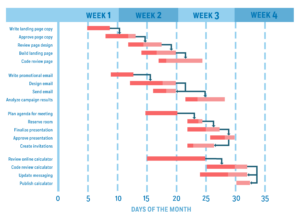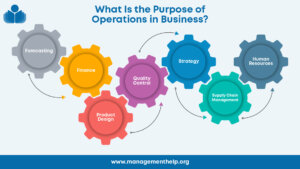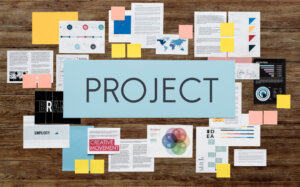If you’re an American reader of this blog and you’re involved in or interested in, project management, then you’re probably familiar with, or at least heard of A Guide to the Project Management Body of Knowledge (PMBOK Guide). In this article, I want to introduce you to a complementary approach to project management which was developed in the UK and is known as PRINCE2.
PRINCE2 originated from a project management method called PROMPT in the 1970s and was adopted by the UK government as a standard that could be used on all government I.T. projects. It has now been adopted by thousands of organizations worldwide including both the UK and Australian governments, the United Nations, NATO, DHL, Barclays Bank, and Visa to name just a few. It was also used successfully by the London Olympic Authority on all of the 2012 London Olympics projects.
So, what’s PRINCE2 all about? Well, firstly it’s a generic principles-based approach to project management, so it can be applied to any type of project. When the latest version of the PRINCE2 manual was developed, hundreds of project managers were consulted in order to develop a method embodying modern best practices in project management.
The 7 principles form the bedrock upon which everything else in the method is based and form one of 4 integrated elements. The 2nd of these elements is the 7 themes, which are aspects of project management that need to be continuously addressed within a project. The 3rd element is the 7 processes which describe who is responsible, what they are responsible for, and when they perform the various activities within the project lifecycle. The last element describes how it is important to adapt the processes and themes to suit the needs of the project. On large, complex, or risky projects, the processes and themes will need to be applied more rigorously than on a simpler, less risky project.
I think this flexibility is one of the main strengths of PRINCE2. It can be used on small projects without incurring a lot of overhead, but can equally be used to good effect on massive, international projects which require a high level of project governance. Another benefit is that because it’s generic, the method can be used on any type of project and if adopted by an organization can offer a common project management language across all projects. This helps to promote better communications both within and between projects.
I think another major benefit is that responsibilities for all the project management team roles are clearly defined. Whereas the PMBOK Guide really only focuses on the responsibilities of the project manager, PRINCE2 describes responsibilities in total for 9 different project management team roles. Included in these are the Project Board (Steering Committee) and the Executive (Project Sponsor) roles. These are the most important on any project because they are responsible for making all the major decisions about the project i.e. committing the money and making decisions about starting/continuing with the project. By clearly defining each project management team role, each role understands what is expected of them and what authority they have for making decisions.
One other thing about PRINCE2 which I think is really great is how it describes the different levels of plan. The Project Board requires a high-level plan covering the whole project (project plan), the Project Manager requires a more detailed plan covering each stage of the project (stage plan) and Team Managers require their own team plan covering a work package which is a short-term and detailed plan. By having these different levels of planning to focus on the needs of each level of the project management team, both communication and control can be improved.
When I first came across PRINCE2 about a decade ago, one thing that surprised me was its insistence that there is no need for regular progress meetings on a project. This went counter to everything I had experienced myself on software projects over the previous 15 years. Managers needed meetings, or so I thought.
Well, in PRINCE2 meetings are only really necessary at the end of each stage and when important decisions need to be taken e.g. to continue or close the project. A more efficient use of management time however is for the Project Board to “manage by exception” which means that they require a meeting at the end of a stage but at the same time they delegate the day-to-day management of the project to the project manager via the setting of “tolerances”. These tolerances can be set for time, cost, scope, quality, risks, and benefits and are a way of delegating authority. For example, cost tolerance could be +/-£10k, or for time +/-8 weeks. If these tolerances are forecast to be exceeded, then the project manager does not have the authority to continue and must escalate the “exception” upwards to the Project Board who can then make a decision. In between the end-of-stage decisions, the project manager keeps the Project Board informed of progress via regular progress reports. I think this can lead to a huge saving of senior management time.
PRINCE2 also focuses on products which helps the stakeholders better understand what the project will deliver, why, when, by whom, and for whom.
In addition to the above benefits, I think that perhaps the most important benefit of PRINCE2 is that it is business-focused. Having a viable business case informs all the decisions taken by the Project Board and also forms one of the principles of PRINCE2 – that a project must have “continued business justification”. This helps to ensure that a project delivers a return on investment and does not get sidetracked into managing the project as an end in itself.
So, I hope I have whetted your appetite to find out more about PRINCE2. PRINCE2 has really helped me become a better project manager and I think it can complement any of the existing tools within the project managers’ toolkit. If you would like to find out more about PRINCE2, but do not fancy reading the 300+ pages of the PRINCE2 manual, then I have put together a free resource (What is PRINCE2?) which covers all the basics of PRINCE2 which I hope you will find useful.
What do you think about PRINCE2?
PRINCE2® is a registered trademark of the Cabinet Office
—————————
For more resources, see the Library topic Project Management.
—————————
 Sections of this topic
Sections of this topic














